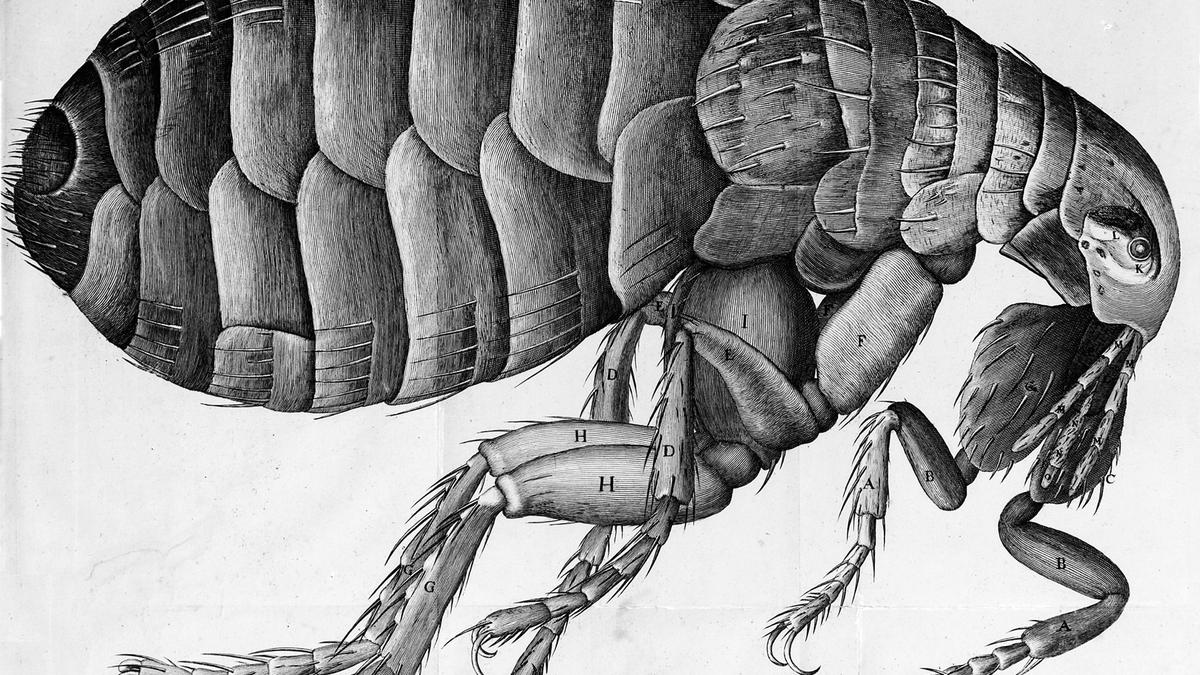
Micrographia: Hooke’s monumental masterpiece
The Hindu
A great book written and illustrated by English polymath Robert Hooke, Micrographia appeared in bookshops in January 1665. The advance copy of this book, which details Hooke’s exploration into many things small, far, and sometimes elusive, is believed to have been shown to the Royal Society on November 3, 1664. A.S.Ganesh tries to hook you onto Hooke’s story…
There are some scientific books that change the course of how we view and perceive the world around us. English naturalist Charles Darwin’s On the Origin of Species brought us natural selection and the theory of evolution. English polymath Isaac Newton gave us his laws of motion and the law of universal gravitation in his work, Principia.
Even though English polymath Robert Hooke’s Micrographia isn’t often seen on par with these, the book remains special in its own right. This is because it wasn’t only a scientific bestseller, but also got the wider public hooked onto a new branch of science – microscopy – for a change.
Born on the Isle of Wight in 1635, Hooke could well have become a celebrated artist. At the young age of 13, Hooke was trained by court painter Peter Lely, a Dutch painter who spent his entire career in England and was one of the leading portrait painters of the day. Hooke, however, complained that the oils and varnishes irritated his chest and decided to attend Westminster School.
Here, Hooke is said to have mastered the first six books of Euclid’s Elements in a week! He had a penchant for ancient languages, learned to play the organ and even experimented with flying machines.
In 1653, the 18-year-old acquired a place at Christ Church, Oxford. He became the assistant of Irish chemist Robert Boyle by 1658 and counted English architect and astronomer Christopher Wren among his friends.
Serving as the first Curator of Experiments of the newly formed Royal Society in 1662, he went on to become one of the early members of the society, three years after its formation in 1660. It was during the time period between 1661-64 that Hooke conducted the bulk of his experimentation and observations for what was to become Micrographia.
He used the microscope – still a new device then – to observe and discover the structure of rocks, plants, and what the book is now most famous for, insects. In addition to demonstrating the immense power of the microscope, Hooke also described planetary bodies that were distant, wrote on the wave theory of light and the organic origin of fossils. As history’s first treatise on microbiology, the book also saw Hooke coin the term “cell” in the biological context.

Gaganyaan-G1, the first of three un-crewed test missions that will lead up to India’s maiden human spaceflight, is designed to mimic - end to end - the actual flight and validate critical technologies and capabilities including the Human-rated Launch Vehicle Mark-3 (HLVM3), S. Unnikrishnan Nair, Director, Vikram Sarabhai Space Centre (VSSC), has said










